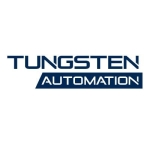Our company is considering UiPath and Automation Anywhere for automating a mainframe application. I have explored UiPath, evaluated its capabilities, and completed a use case.
Building automation with UiPath is exceptionally straightforward. However, clients need to exercise caution by ensuring that the automation doesn't require intricate human logic. If they seek simple automation without incorporating human elements, UiPath facilitates an easy and automatic implementation, excluding the need for advanced AI features.
We leverage UiPath to automate processes aligned with the good cause our company supports. This includes tasks related to warehouse management and maintaining a clean architecture. For instance, activities like clearing out mailboxes, collecting bills, and optimizing server data storage contribute to reducing running costs for the machines involved.
We employ UiPath for comprehensive end-to-end automation in the client's operations. They have successfully automated around two hundred use cases, forming a critical backbone for their extensive operations. The dependency on automation results is notably high, especially in areas like warehouse management, where the efficiency gains are substantial. Enabling automation to handle these tasks daily liberates the workforce from repetitive manual efforts, allowing them to redirect their focus to other crucial aspects of their operations. This strategic use of automation enhances productivity and expedites the completion of automated tasks.
We have a robust user community within UiPath, and I have actively participated in it. Although I wasn't as engaged this year due to a significant impact on the client caused by a cyber attack on their network, the community support has been exceptional. Despite my increased workload in addressing the aftermath of the incident, the UiPath user community has proven to be like a supportive family. Whenever I've raised queries or sought assistance, the responses have been prompt and helpful.
The advantages of using UiPath are evident in the efficiency gains achieved by minimizing human efforts. For instance, when uploading a report to SAP or executing a job in Insight SAP, these processes can often take several hours. Without automation, users may be tied up in monitoring these tasks, risking potential human errors due to prolonged attention. However, implementing UiPath effectively liberates users from this prolonged monitoring. Automation ensures that tasks run seamlessly according to protocol, allowing users to easily obtain results and simultaneously engage in other important activities. The goal is not to overcomplicate processes but rather to streamline and optimize them for enhanced productivity throughout the day.
UiPath has played a crucial role in reducing our on-premises footprint and enhancing the solution's capacity. The company we're currently assisting primarily focuses on order management, dealing with a significant influx of orders. By leveraging UiPath, we've effectively streamlined the order management process, optimizing the solution's capacity to handle a large volume of orders.
Our team actively engages with the academy courses provided by UiPath. As UiPath continuously expands and introduces new features, the courses serve as an invaluable resource. We find that the admin courses are particularly beneficial for us. When we come across new elements or features, we go through the courses to understand them thoroughly. This allows us to assess their compatibility with our solutions and implement them at our own pace. Additionally, if there are issues with older automation, the admin courses assist us in applying updated solutions to enhance performance. It not only helps with incorporating new automation but also in maintaining and improving existing ones, making it an excellent resource for managed support.
It accelerates digital transformation and significantly lowers IT costs. This is achieved without the need for expensive or complex application upgrades or extensive IT support. Currently, we are reducing the number of active machines and servers in operation. Although there might be an initial investment in bringing up users, the efficiency gains result in substantial savings. As we streamline processes through automation, we not only reduce the number of calls and machines but also realize long-term ROI by saving on infrastructure costs. In essence, the more automation implemented, the greater the cost savings and efficiency improvements over time.
UiPath has been instrumental in minimizing human errors, particularly in the process of uploading orders into the system. With automation, validation, and auditing integrated into our workflows, potential errors are identified at the initial stage. This allows us to promptly notify users of any issues, providing details based on the preset parameters. Through these efforts, we have observed a substantial reduction, estimated at around twenty to thirty percent, in errors that could potentially lead to future problems.
It has effectively liberated employee time by automating around two hundred processes within our sizable company. Based on my estimates, we have saved approximately three to four months' worth of workdays. This translates into significant time savings for our team and contributes to improved efficiency and productivity for our client.
The most valuable aspect is its simplicity in coding. All that's required is a fundamental grasp of coding principles and a bit of logical thinking. Once you've acquired these skills, you can effortlessly write a substantial amount of code and easily upgrade it as needed.
The integration is seamless and streamlines our workload.
It would be beneficial to enhance application insights, and I've shared this suggestion with the UiPath committee as well. Occasionally, clients expect a process to run at a specific time, but due to various factors, it might get delayed by half an hour or more. Currently, we only become aware of such delays by actively checking within the application. It would be beneficial if the system could proactively generate alerts, notifying the client about any delays in the process execution. This would provide transparency and enable clients, as well as our team, to be informed and take necessary actions, such as considering a migration if needed.
I have been working with it for approximately six years.
It exhibits high stability. With a robust security department in place, we conduct thorough code reviews, contributing to a secure and stable process. On a scale from one to ten, I would rate it at nine.
Our clients are a massive enterprise with approximately two hundred automations in place. Scalability is dependent on the process level. If you have independent processes that can be executed, scaling up is straightforward.
Technical support is readily accessible to us always. I would rate it ten out of ten.
When comparing Automation Anywhere to UiPath, it's important to mention that Automation Anywhere has undergone numerous updates in recent years. In my assessment around 2020, it lacked features such as the concept of attended and unattended bots, as well as multi-bot automation. However, I believe they have since introduced these features, though I haven't personally explored them. In terms of features, Automation Anywhere lagged behind UiPath.
The deployment process took approximately three months for us due to various IT issues. This involved obtaining clearance from the IT, firewall, and security teams. In the current client setting, which has about five to six internal auditors, securing approvals was a meticulous process. Once all the necessary clearances were obtained, the actual implementation only took around fifteen days. Additionally, we received direct support from the UiPath team during the integration process. From our side, only three individuals were involved in the implementation process.
It has been deployed across multiple departments and various regions, including APAC, Europe, and Australia.
Maintenance is not a major concern. System-level maintenance is required, but if your automation is rigid and doesn't necessitate frequent changes, it's easy for us to manage and monitor. For maintenance, our current approach involves regular database cleanups and similar tasks since we are on-premises. However, once we migrate to the cloud, I believe such procedures won't be necessary anymore.
I believe that the price is on the higher side. From an ROI perspective, I would give it a rating of five out of ten. However, if we exclude the ROI considerations from the overall assessment, I would rate it at seven.
From my perspective, it's a strongly recommended tool. However, from the client's viewpoint, especially since they are venturing into RPA implementation for the first time, they prefer a proof of concept before proceeding. Overall, I would rate it ten out of ten.



















